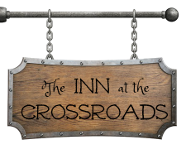Metheglin Mead
Thoughts:
I started my batch in April, bottled in May, and tried it at the end of August, about 5 months later. At this point, it’s ever so slightly fizzy when first cracked open, and a beautiful light golden color.
It smells like honey.
The flavor is somewhat herbal, but in a good, kitchen-not-medicinal way. I could pick up hints of the sage and rosemary, in particular, while the other herbs and grasses add depth and complexity. The flavor is long and changeable, with just a smidge of acidity.
I’m going to need to learn better descriptors for alcohol. For now, suffice to say that this is wonderful, although should be consumed with caution, tasty as it is. :)
Why it should be in the Next Book:
I could envision this mead being one of many made by the Beesburys, of Honeyholt. I could also see it as a mead from either a meadowy place in the reach, or perhaps even somewhere in the Vale. Or, since metheglin was originally a medicinal mead, it would be well suited to a sept, because of the joint healing/brewing skills of monks and septons.
Get the recipe on the brew blog, Game of Brews!












